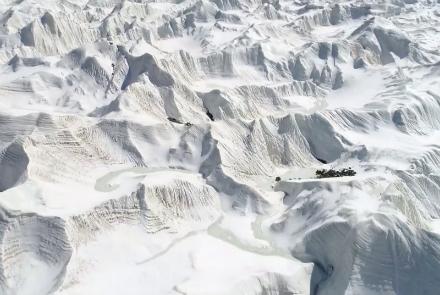Scientists are investigating if the early ice collapses in the glaciers flanking the Geladaindong Peak in the Yangtze River source region in China indicate a climate change impact, the Associated Press reported on Saturday.
The investigation is part of an annual program of the Chinese Academy of Sciences (CAS) aimed at preserving the eco-system in the Yangtze River source region on the Tibet-Qinghai Plateau, the report said.
The ice collapses spotted by the CAS scientists in the glaciers around the Geladaindong Peak, the tallest massif in the Tanggula Mountain Range, could suggest that the glaciers' thaw season has come earlier than usual, according to He Xiaobo, chief observer of the Tanggula Observation Station of the CAS.
“It's just late April now and we have seen ice collapses. Gravity-caused ice collapses usually happen in warmer seasons or the thaw season, as we found it in April, does it mean that the thaw season came earlier? It indicates that the glaciers are very sensitive to climate change, this sensitivity can be regarded as an amplifier for the climate system, so we attach great importance to glaciers change," said He, as quoted by AP.
Research and investigation of the region's glaciers is vital for the preservation of the eco-system in the entire Yangtze River source region, He added.
“Actually, changes of the glaciers indicate changes in climate in the whole Yangtze River source area. The protection of this area, as we are talking about, depends on these basic data," he said.

